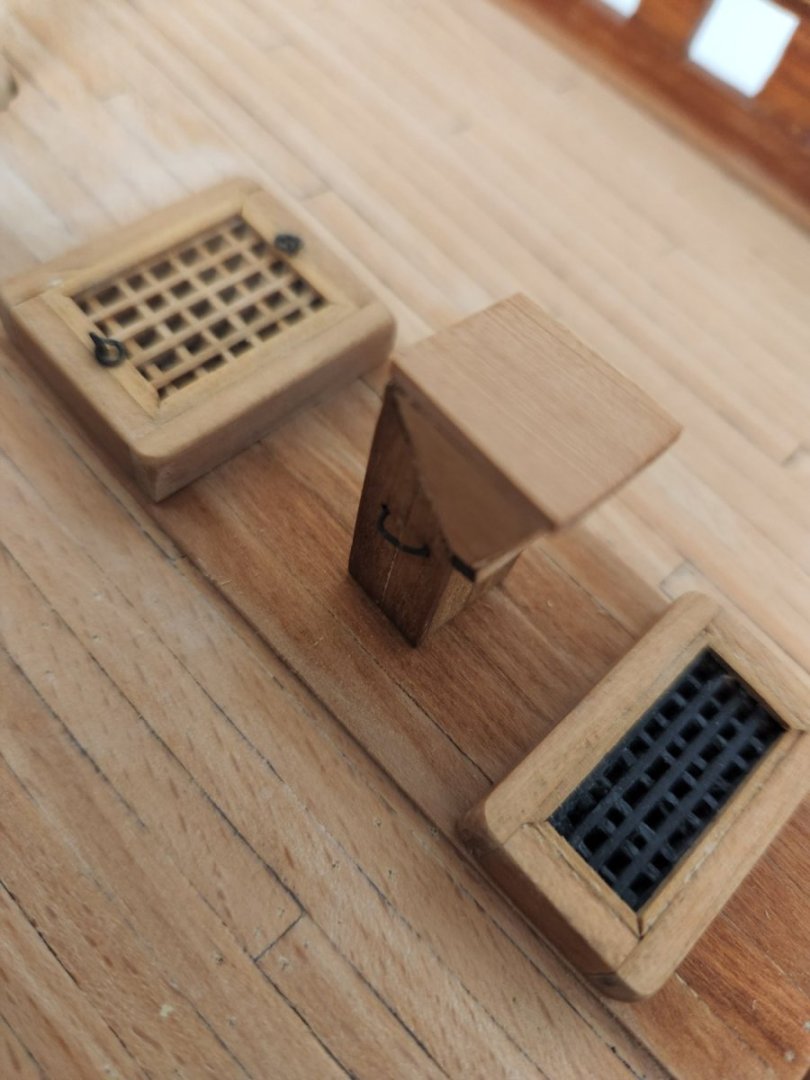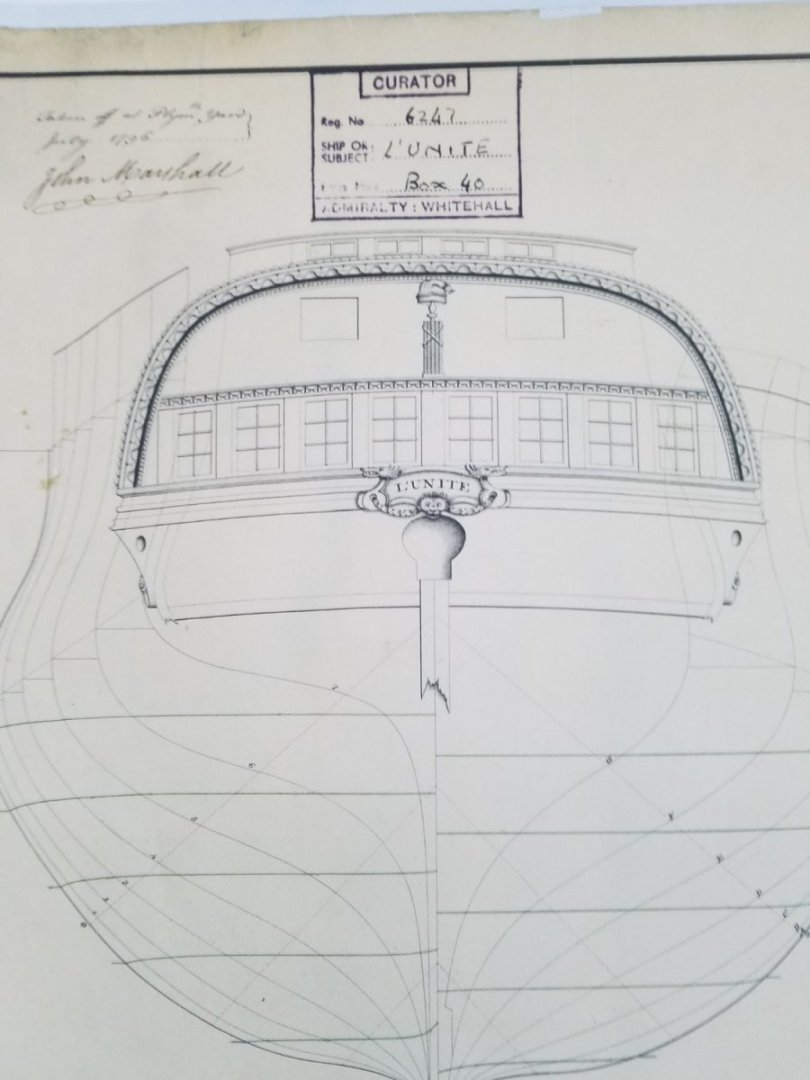
barkeater
-
Posts
320 -
Joined
-
Last visited
Content Type
Profiles
Forums
Gallery
Events
Posts posted by barkeater
-
-
-
-
I also would recommend Monfelds as your first book purchase. I have a dozen or so books and more often than not I find what I'm looking for in his book.
Richard
- Canute and gulfmedic1
-
 2
2
-
If I'm understanding this correctly, you need to put a curve in a 2x4 mm piece of plywood. You could just cut a piece of wood and steam bend in this case. Since it is originally plywood, I assume the finished piece will be hidden or painted. In that case you could use whatever wood you want. You may be able to find a 2x4mm and a 2x5mm piece in the lengths you need already cut from walnut or bass in one of the many online stores. The thicker the wood, the harder to steam bend but 2 mm is readily doable. I'm assuming you have an electric steam bender. If not and you don't want to get one you could soak and make a jig to let it dry in the proper curve, but a steam bender is a cheap and worthwhile tool to have and pretty much a necessity for ship building.
Richard
- mtaylor, Canute and thibaultron
-
 3
3
-
I don't know if this would help since I'm not fully clear on what you need to do and what tools you have but thin plywood sheets are readable available in different thicknesses. I've bought them on Amazon. I believe they were birch and have used them for bulkheads as well as an undercoat for deck planking.
Richard
- mtaylor, Canute, CaptnBirdseye and 1 other
-
 4
4
-
-
I would also guess that they would be iron as iron gratings replaced wood ones in the next century. I would like to verify if anyone knows. Thanks.
Richard
- Keith Black and mtaylor
-
 2
2
-
I'm building out the deck furniture on Unite as refit by the British dockyard 1797. The plans call for steam gratings above the stove. Every other grating is marked as just grating on the plans. I can't seem to find if there was a difference or not in construction between steam gratings and regular cargo gratings. Does anybody know the answer? Thanks.
Richard
- mtaylor and Keith Black
-
 2
2
-
I do try to get it tight. Do 1 knot, check the tension and then add the second and if still happy the third. An overhand knot can be undone fairly easily if you need to adjust. You want the knot as tight as you can when you finish up and then lock the knot in with the glue. I do 1/48 scale.
Richard
- Knocklouder and mtaylor
-
 2
2
-
One of the problems you have to consider is the thickness of the knot itself. You want a low profile to better approximate the real thing. You also want to avoid pulling on the line as you tie. This can be a real problem when you are dealing with a ship which has a lot of rigging. You also want something simple and easy for those tight spots. I tie three overhand knots with thin thread of the appropriate color and place them against one another as if I was rapping the line to simulate the seizing. You can adjust this knot for tension if needed as you counterbalance with its opposite line if it is a starboard/port configuration or standing rigging on the center line. I then make sure it is tight and hit the knot with a tiny amount of thinned pva (wood glue) to lock it in. The glue can't be seen once it dries.
Richard
-
Very nicely done. Thanks for sharing.
Richard
- mtaylor, Keith Black and GeorgeKapas
-
 3
3
-
I have a MM scroll saw and table saw as well as a Byrnes thickness sander and a Proxxon mini lathe. The scroll saw is fine. You have to go slow but you want to go slow when cutting irregular shaped pieces. The table saw is ok as long as I don't cut anything over about 1/4 inch. (Note: I do use a lot of very dense wood.) I'd love a Byrne's table saw and I might upgrade for the next build when I have a lot of lumber to cut for the hull. The thickness sander is great. On my current build I ripped planks of ebony for the wales before I had it and did not realize that the board I was cutting from was not of uniform thickness which caused the planks to have different widths along their length. Unfortunately, I did not realize it until I was on the third of six courses. It was a pain to wind up with an even wale but it came out fine. With the Byrne's now I can even out any board and avoid this dilemma. Just used it to taper my keel from head to foot. The lathe I just got and have not had a chance to use it yet. Good luck with your scratch build.
Richard
-
Your post asked for minimum tools for scratch build. Like most other scratch builders, I use a lot of hand tools so micro files, scalpels, sandpaper, miter saw and box, and different picks and scrapers are what I use most. I'm not a big fan of rotary tools such as a Dremel as I feel I have more control with hand tools. The one power tool that you use most for scratch building is a scroll saw. If you want to rip your own planks rather than use commercially available wood strips, then you need a table saw. A lathe is not necessary. A mill or thickness sander is also nice, but the scroll saw, and table saw are what you are going to get the most use out of.
Richard
-
I have had the same problem. It has shied me away from some suppliers who are out of line in their shipping.
- Rik Thistle, Canute, Dave_E and 2 others
-
 5
5
-
I have done all my masts and yards by hand so far. If you taper down to size by squaring it with a file, then make it eight sided this works quicker than sanding alone. Sand when you are done with filing to round it out. Just remember to keep checking with calipers. Even if you use a lathe, there are portions of masts and yards which need to be done by hand. Having said this, I recently acquired a lathe which I hope will speed up the work.
Richard
-
-
I would suggest Testors Dulcote as a finish. It is a matte finish and as such will not be shiny. It coats evenly and is simple to use right out of the bottle. Also, it is sold in small bottles, so you don't wind up with a lot of unused product.
Richard
- mtaylor, Rodedwards, Canute and 1 other
-
 4
4
-
I'm not familiar with your kit but II built the Alert by Mamoli which was a cutter with a 360-degree rotating canon midship. If I remember correctly, it was a 4 pounder but had no special name. If you look, I'm sure you can find pictures of the Alert in the gallery to see if what you have matches.
Richard
- Keith Black and mtaylor
-
 2
2
-
-
I have used bow string wax which is used for target or hunting bows. I don't know the ph or if there are long term issues, but it is easier to use than bees wax and it works well. It comes in a container like chapstick or lip gloss.
- The Gimps Chimp and mtaylor
-
 2
2
-
Thank you all for the input. I also feel that it was probably removed. Still trying to decide to replace it with something or let it stay. Does anybody have an idea as to what to replace it with which would be similar in size?
Richard
- mtaylor and thibaultron
-
 2
2
-
I'm building the U'nite 1797 as refit by the British. She was a captured French vessel. I have both the "as taken" and "as refit" plans. The dockyard removed a hog back cabin and railings on the weather deck and replaced the railings which shows in the refit drawings. My question concerns the Phrygian cap and bundled sticks on the stern. Since these are symbols of the French revolution would the dockyard have removed them? The refit drawings do not show the stern. It would have been a great ruse de guerre. I also don't know what I would replace them with since I would like to keep the same approximate size. Do I go with what I know was there before the refit or make something up? I'll probably go with the Phrygian cap and bundle but I would be interested in opinions. Thanks.
Richard
- bruce d, Keith Black, thibaultron and 2 others
-
 5
5
-
Congratulations and nicely done. I enjoyed following your log.
-




HMS Granado by HardeeHarHar - Caldercraft - 1:64 - Bomb Vessel
in - Kit build logs for subjects built from 1501 - 1750
Posted
looking good.